Clinical Library
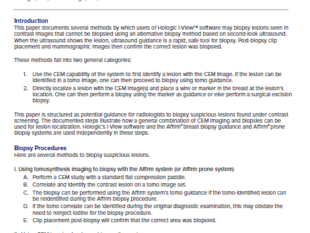
This paper written by Andrew Smith, PhD, Vice President Breast Health R&D, documents several... Show more
This paper written by Andrew Smith, PhD, Vice President Breast Health R&D, documents several methods by which users of Hologic I-View software may biopsy lesions seen in contrast images using stereotactic methods

Authored by Jason McKellop, MD, this white paper will discuss his experience at Beverly Radiology... Show more
Authored by Jason McKellop, MD, this white paper will discuss his experience at Beverly Radiology Medical Group, Breastlink Tarzana as they adopted high resolution imaging with 3DQuorum® technology.
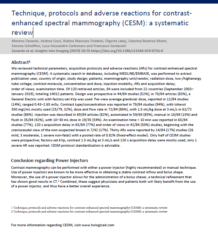
The article is intended to assess the injection techniques in contrast imaging.
Please visit... Show more
The article is intended to assess the injection techniques in contrast imaging.
Please visit PubMed for the full text article.
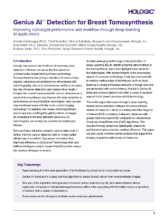
Authored by Brad Keller, Ph.D, Director, Clinical Research Breast Health, Hologic, Inc.,... Show more
Authored by Brad Keller, Ph.D, Director, Clinical Research Breast Health, Hologic, Inc., Ashwini Kshirsagar, Ph.D, Chief Scientist, Clinical Solutions, Research and Development, Hologic, Inc. and Andrew Smith, Ph.D., Vice President, Image Research Breast Health, Hologic. Inc. This whitepaper documents how radiologists demonstrated clinical superiority,measured by significantly increased area under the ROC curve, when reviewing tomosynthesis cases with the Genius AI Detection information compared to reviewing the cases without the information.

Brad Keller, Ph.D, Director, Clinical Research Breast Health, Hologic, Inc., Ashwini... Show more
Brad Keller, Ph.D, Director, Clinical Research Breast Health, Hologic, Inc., Ashwini Kshirsagar, Ph.D, Chief Scientist, Clinical Solutions, Research and Development, Hologic, Inc. and Andrew Smith, Ph.D., Vice President, Image Research Breast Health, Hologic. Inc. This whitepaper documents how Hologic's product, 3DQuorum 6-mm slices known as SmartSlices can significantly reduce the number of slices and file sizes in a tomosynthesis dataset, while maintaining clinical performance compared to 1-mm datasets. The fewer number of total slices in the study allows a decrease in radiologist interpretation time, saving on average 1 hour per reader in an 8-hour day.

Authored by Georgia Giakoumis Spear, M.D., this white paper will discuss her... Show more
Authored by Georgia Giakoumis Spear, M.D., this white paper will discuss her experience at NorthShore University Health System as they adopted proven technological advances to increase their ability to detect breast cancers at the earliest stage.

Study Goal: Quality assurance initiative to determine the minimum number of... Show more
Study Goal: Quality assurance initiative to determine the minimum number of calcification-containing stereotactic biopsy specimens sufficient for pathologic diagnosis and immunohistochemistry (IHC) in cases of malignancy.
Please visit PubMed for the full text article.

This article is intended to compare case delays in all patients undergoing breast conserving... Show more
This article is intended to compare case delays in all patients undergoing breast conserving surgery (BCS) with wire localization in 2017 with all patients undergoing BCS with a radiofrequency identification tag system.
Please visit PubMed for the full text article.

A prospective, single-center pilot study evaluated the effectiveness of the... Show more
A prospective, single-center pilot study evaluated the effectiveness of the FDA-cleared Radiofrequency Identification Localization System (RFLS).
Please visit PubMed for the full text article.
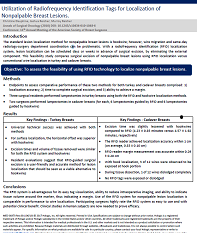
The article is intended to assess the feasibility of using RFID technology to localize... Show more
The article is intended to assess the feasibility of using RFID technology to localize nonpalpable breast lesions.
Please visit PubMed for the full text article.

The article is intended to assess the safety and performance of a radiofrequency identification... Show more
The article is intended to assess the safety and performance of a radiofrequency identification tag to localize nonpalpable breast lesions for surgical excision.
Please visit PubMed for the full text article.
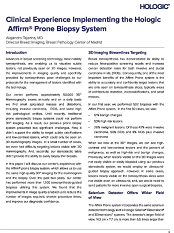
Authored by Alejandro Tejerina, MD, this white paper will cover the advances in breast... Show more
Authored by Alejandro Tejerina, MD, this white paper will cover the advances in breast screening technology, most notably tomosynthesis, are enabling us to visualize subtle lesions, not previously seen on 2D images. However, the improvements in imaging quality and specificity provided by tomosynthesis pose challenges to our protocols for the management of lesions identified with the technology.
Page 2 of 4
